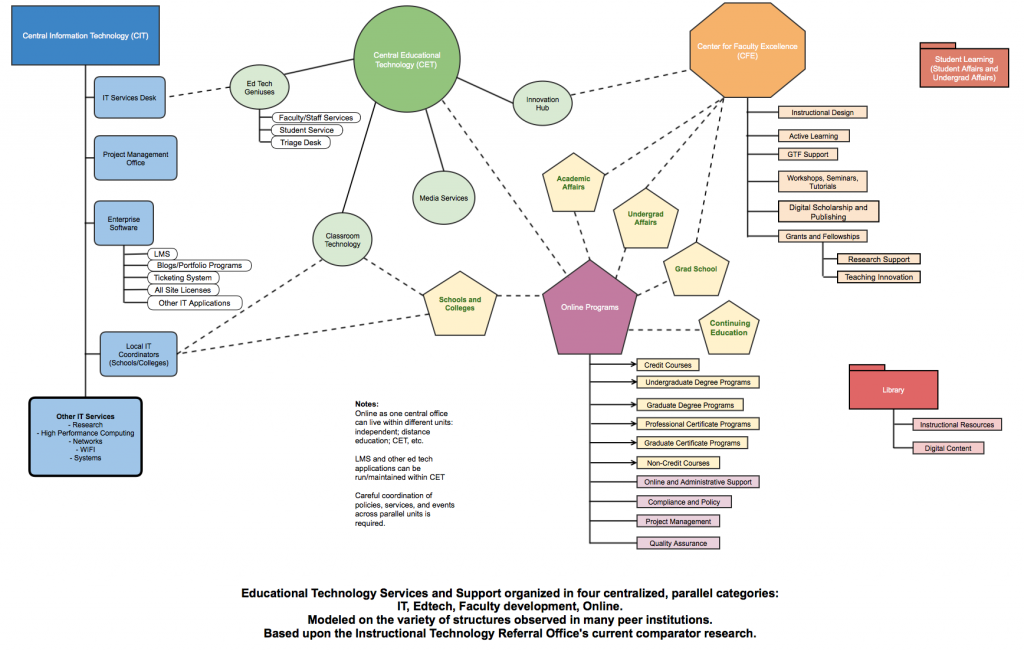About
How might early adopters of educational technology promote a more progressive tech mindset amongst university leadership?
Explore this question and others through our interactive game! We’ve designed this activity to help policy-makers identify their institution’s strengths and weaknesses, as well as to engage in productive conversations about organizational change.
The game presents each team of players with a common vocabulary that can be used to explore a wide range of possible organizational structures, then prompts everyone to reflect on their creative and useful “remixes” of these structures.
History
On the basis of the research presented in this report web site, InTRO created a hypothetical organizational model—one that we feel best represents the underlying principles observed at our peer institutions. We identified four service areas that impact and support academic programs and that are increasingly centralized. These included Information Technology, Educational Technology, Faculty Development (Teaching and Learning) and Online Programs. As you may have seen elsewhere on this site, we modeled these in parallel “centralized” structures, with their component support and service activities placed in connection with each central service.

Centralized Technology Services in Parallel, March 2015. A rendering of common organizational structures found at a variety of peer institutions. Click to enlarge.
As a hypothetical model, we should emphasize that no observed institution was organized exactly like this, nor would we expect any institution to develop services exactly as this model presents them. Instead, the model provides information for considering how services should be connected to each other—formally and informally—to meet the academic mission and objectives of an institution.
Re-Imagining and Remixing
The definitions for these service areas, and assigning associations between services, units, and activity, can vary significantly for different organizations. Some institutions combine most of these functions in a single unit, while some distribute them across many units. And while at one university, IT and educational technology might be considered one combined area of activity, at another, educational technology might be incorporated into support services for teaching and learning. Online programs, meanwhile, can live almost anywhere within a university’s organizational chart.
We hope that as you play our game, you will consider and explore some of these variations, while also discussing what possibilities might arise from connecting services in different ways.
Downloads
- Game Instructions [PDF]. These include a copy of the chart above and complete instructions for both the Short Game and the Long Game.
Card Sets
All card sets print in full color on 11×17 paper or cardstock.
- Organizational Card Set [PDF]. These are used to play both the Short Game and the Long Game.
- Modified Stakeholder Card Set [PDF]. These cards, adapted specifically for this game by the InTRO team, are used in the Long Game.
- Original Stakeholder Card Set [PDF]. Developed by Ohio State, these color cards can be used for an even more complex iteration of the Long Game.
Contact Us
If you play the game at your institution, we’d love to hear how it goes. E-mail us at intro@uoregon.edu with any feedback you have for us, or if you have any game play experiences you’d like to share!
